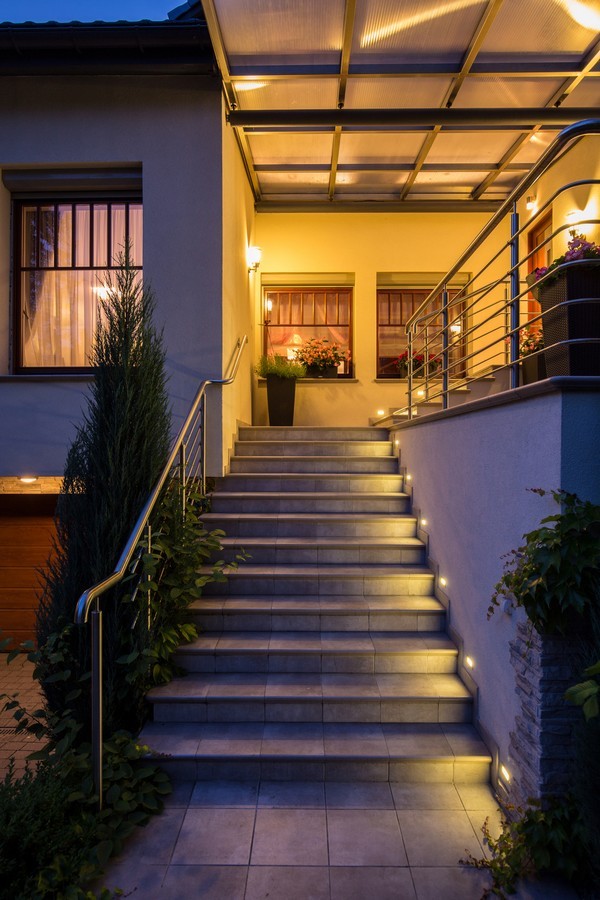

Dinner on the patio, tinkering in the courtyard or taking out the bins; outdoor lighting makes it all more pleasant. Which outdoor lights should you go for? How can you keep it safe and how to ensure that they consume as little as possible?
Due to their extremely low energy consumption, LED lights are also perfectly suitable for outdoor use. Indeed, the cold only improves their efficiency (i.e. the amount of light supplied for the same amount of electricity consumed).
You can choose between LED lights that connect to your power grid or LED lights without wiring, powered by a small photovoltaic cell.
The positives:
The negatives:
The positives:
The negatives:
Outdoor lighting cannot just be fitted any old way. You’ll need to bear in mind certain safety standards depending on the voltage of your installation
Using this voltage level makes installation a lot safer and easier. You can simply fit the cable on the ground, without risk to the user, not even if the cable should break.

Wall lights, pendant lights or lanterns.
Recessed spot lights. But careful if you're downlighting the steps from above: avoid shadows and people getting blinded.
Lights that can be angled downward.
Upward-facing wall lights highlight the vertical lines of the architecture without dazzling the view from the inside through the windows
The imagination of the designers is without limits, which means that you can find the following at a very low cost:
You will be able to create the atmosphere of an old-fashioned "guinguette" or mysterious or romantic lights for your terrace dinners.
The pleasure of a lighting system is not only derived from its power, its orientation, its layout, but mainly from its quality of light: "warm", "neutral" or "cold".
| Colour temperature is a very useful concept to understand when choosing a light source suitable for its use. Moreover, it is now always indicated by the manufacturer on the packaging of the lamps. |
Subscribe to our newsletter and stay informed about energyfacts.